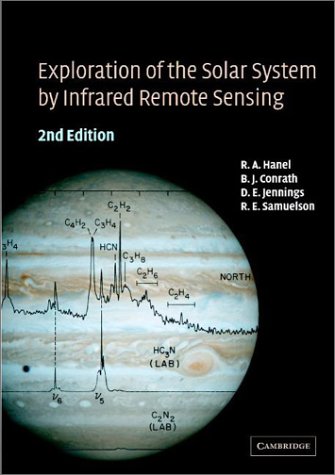

Most ebook files are in PDF format, so you can easily read them using various software such as Foxit Reader or directly on the Google Chrome browser.
Some ebook files are released by publishers in other formats such as .awz, .mobi, .epub, .fb2, etc. You may need to install specific software to read these formats on mobile/PC, such as Calibre.
Please read the tutorial at this link: https://ebookbell.com/faq
We offer FREE conversion to the popular formats you request; however, this may take some time. Therefore, right after payment, please email us, and we will try to provide the service as quickly as possible.
For some exceptional file formats or broken links (if any), please refrain from opening any disputes. Instead, email us first, and we will try to assist within a maximum of 6 hours.
EbookBell Team

4.1
10 reviews
ISBN 10: 0521818974
ISBN 13: 9780521818971
Author: R A Hanel, B J Conrath, D E Jennings, R E Samuelson
Part I: Theory and Fundamentals
Chapter 1: Foundation of radiation theory
Maxwell's equations
Conservation of energy and the Poynting vector
Wave propagation
Polarization
Boundary conditions
Definitions and geometry
Chapter 2: Radiative transfer
Formal solutions
Invariance principles
Special cases
Chapter 3: Interaction of radiation with matter
Molecular spectroscopy
Line strength
Line shape
Solid and liquid surfaces
Cloud and aerosol particles
Chapter 4: The emerging radiation field
Model atmospheres
Multiple lapse rates
Model with realistic molecular parameters
Part II: Instrumentation and Techniques
Chapter 5: Instruments to measure the radiation field
Introduction to infrared radiometry
Optical elements
Diffraction limit
Chopping, scanning, and image motion compensation
Interferometers (e.g., Michelson, lamellar grating)
Heterodyne detection
Infrared detectors (thermal, photon)
Calibration
Part III: Observational Results and Interpretation
Chapter 6: Measured radiation from planetary objects up to Neptune
(This chapter covers observational data for all major planets up to Neptune)
Chapter 7: Trans-Neptunian objects and asteroids
Pluto and Charon
Comets
Asteroids
Chapter 8: Retrieval of physical parameters from measurements
Retrieval of atmospheric parameters (temperature, gas abundance)
Clouds and aerosols
Solid surface parameters (temperature, thermal inertia)
Photometric investigations
Chapter 9: Interpretation of results
Radiative equilibrium
Atmospheric motion
exploration of the solar system by infrared remote sensing
first remote sensing satellite of world
exploration of the solar system
exploration of solar system objects
exploration of the sun
Tags: R A Hanel, B J Conrath, D E Jennings, R E Samuelson, Exploration